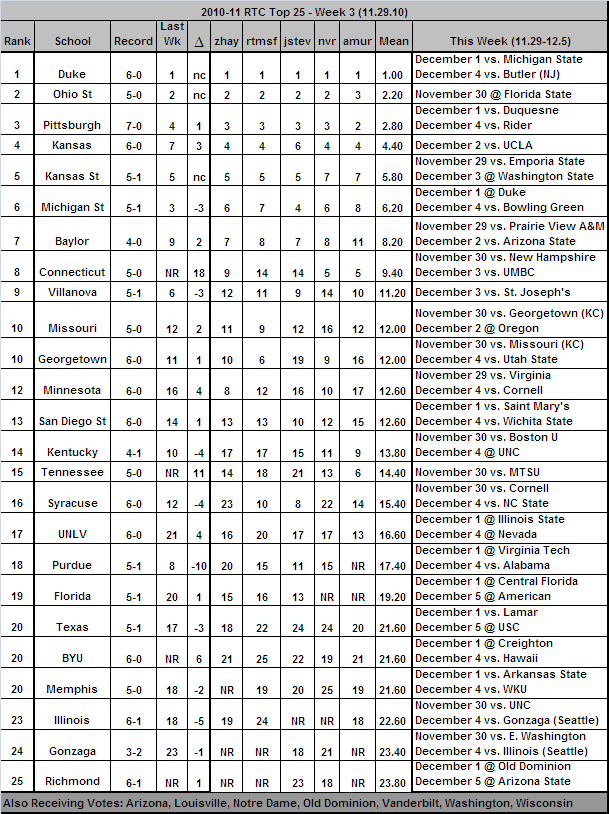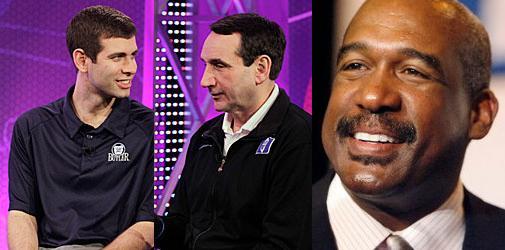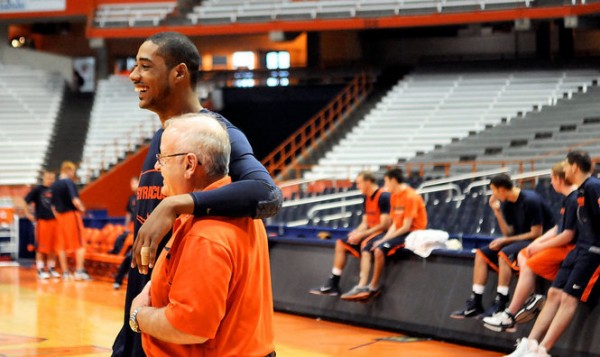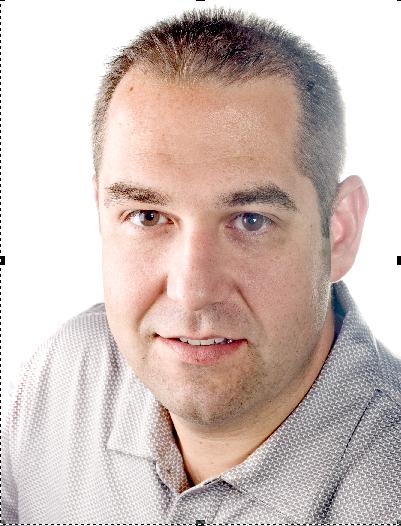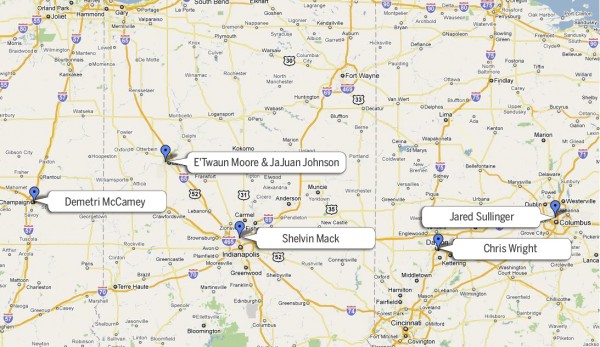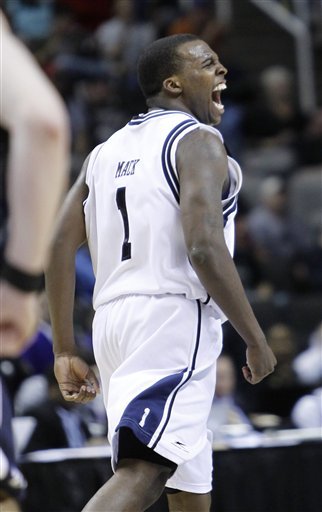
Andrew Murawa is the RTC correspondent for the Pac-10 and Mountain West Conferences and an occasional contributor.
To read the entire In Their Words series, click here.
Part Seven: MARKETING
Over the summer, we’ve spent time hearing about some of the next big-name recruits on their way to college basketball: Jared Sullinger and Harrison Barnes, Anthony Davis and Michael Gilchrist. We’ve heard the big-time schools announce their high profile games on their upcoming schedules: Kentucky going to the Maui Invitational and visiting North Carolina, Michigan State hosting Texas and going to Duke. But for the vast majority of Division I programs, they’ve been flying under the radar. There are at present 73 teams that participate in basketball in the six BCS conferences, but there are 347 total programs in Division I. Of those other 274 programs, there are certainly quite a few big-name programs: last year’s national runner-up Butler comes to mind immediately, as does Gonzaga, Memphis and a handful of other schools in conferences like the Atlantic 10 and the Mountain West. But, we were also interested in how the other half (or really, how the other three-quarters) lives, so we spent some time talking to coaches, athletic directors and other people around the country affiliated with some of those other schools — those non-BCS schools, those “mid-majors” — and we asked them about how they recruit, how they create a schedule, how they market their programs, and quite a few other things. Over the next eight weeks, we’ll let them tell you their story, in their own words.
To begin, let me introduce and thank this week’s cast of characters:
- Andrew Roberts, Assistant Athletic Director for Sports Information, Arkansas-Pine Bluff – Roberts runs a tight ship at UAPB as the sole full-time member of the Sports Information Department.
- Murry Bartow, Head Coach, East Tennessee State – Bartow is entering his eighth season as the Buccaneers head coach, after having previously succeeded his father Gene Bartow as the head coach at UAB. Bartow has posted a 118-72 record in his years at ETSU and has racked up 241 total wins and four NCAA appearances in his 13 seasons as a head coach.
- Eric Reveno, Head Coach, Portland – Reveno heads into his fifth season at Portland having turned around a program from a team that was 18-45 in his first two seasons to a team on the rise with a 40-24 record over the last two seasons. Reveno spent his previous nine seasons as an assistant at Stanford, his alma mater where he was a Pac-10 Conference All-Academic Team selection as a senior.
- Jessica Dickson, Assistant Athletic Director for External Relations, UMKC – Dickson has been in her current position, where she oversees marketing and promotions for UMKC, for just over three years.
- Todd Miles, Assistant Athletics Director for Media Relations, Long Beach State – Miles starts his third year in Long Beach following a seven-year stretch at Boise State where he was the primary media relations contact for the basketball team.
- Gregg Bach, Assistant Athletics Director for Communications, Akron – Bach was named to his current position this past summer after having spent the previous eight years on the media relations staff in the Akron athletic department. His new job makes him the spokesperson of the athletic department.
- Kevin Keys, Associate Athletic Director for External Operations, Liberty – Keys is a ’77 Liberty graduate who enters his sixth year back on campus in charge of Liberty’s licensing, promotions and marketing.
Last time out we introduced you to the marketing side of mid-major basketball programs and its range of athletic budgets from the one-man Sports Information Department on up. This week, we’ll take a look at another big difference between mid-major programs: the size of the markets in which they play. When these schools compete in small college towns, they can be the talk of the town when things are going well, but for those schools in bigger markets, they are in danger of being overshadowed and potentially lost in the crowd no matter how well they’re playing at the moment.

With So Many Entertainment Options in Big Cities Like LA, Finding Fans Can Be Tough
Andrew Roberts, Assistant Athletic Director for Sports Information, Arkansas-Pine Bluff: I definitely think it is an advantage (to be in a smaller market), here in the state of Arkansas. I’m originally from Texas, the Houston area, and two schools in that area are in our conference: Prairie View A&M and Texas Southern. They have at times been lost in the shuffle of everything else that is going on, because you’ve got professional sports franchises and other colleges in the city of Houston and high school football and they have sometimes voiced concerns with the amount of coverage they have gotten. There is just so much going on in the city from a sports perspective. At times, it’s just hard for those programs to get ample amount of coverage because there is just so much going on. You’ve got a lot of competition for coverage among those other entities, where in Little Rock its UAPB, its UALR and then that’s really it in the Little Rock area. You’ve got the Arkansas Razorbacks, but there aren’t any professional sports in the state, so there is probably more ability for the news outlets to cover local colleges.
Murry Bartow, Head Coach, East Tennessee State: It can go both ways playing in a small community. Our fans are very much diehard fans. We’ve got very hardcore fans, which is great if you’re winning, and if you’re losing, they let you know about it. It can work both ways, but I’d much rather be in this situation. Let’s say you’re a mid-major program in a big city, it’s tough, because you can easily get swallowed up from a media standpoint and a PR standpoint. In the newspaper, you might be on the sixth or seventh page, if at all, whereas when we do something good or bad, it’s going to be the lead story in our paper. No question, if we play tonight the lead story in the paper tomorrow is going to be about ETSU basketball. If you’re a mid-major in a big city, you probably have to flip to the back pages to see anything about your program. That would be something you fight. So I like the situation we’re in, but if you’re not winning, then it can obviously work the other way.
Eric Reveno, Head Coach, Portland: When you look at Gonzaga, as far as the city of Spokane, they are the biggest show in Spokane, by far. Portland is not the case, we’ve got the Blazers, we’ve got Portland State, we’ve got minor league baseball, we’ve got more nightlife, we’ve got more going on, which is good. But from a standpoint of getting corporate sponsorship and getting fans, if you’re a company in Spokane and you want to wine and dine your clients, you take them to a Bulldogs game, because there’s nowhere else to take them.
Jessica Dickson, Assistant Athletic Director for External Relations, UMKC: We’re not a small market, so I actually think it is a little more challenging for a smaller school in a large market, as compared to some of our league opponents who are in smaller markets where there’s not as much competition for entertainment. I don’t necessarily think that we directly compete with the Kansas City Chiefs for fans. I think that we as a mid-major school compete with that dinner-and-a-movie crowd, that’s a little more comparable to what our price point is. But we do have to compete. There are so many entertainment options in Kansas City, from the art to the theater to the ballet to the movies to concerts at the Sprint center to football games to Royals games to Wizards games. There are so many options of things for people in KC to do, so we have to come up with creative ways to keep UMKC basketball at the top of their minds.
Todd Miles, Assistant Athletics Director for Media Relations, Long Beach State: We’re obviously competing against UCLA, USC, everybody else in our league, the Lakers, the Dodgers… there’s so much to do here. Getting attention in a place like this is a lot harder here than it was at Boise State in terms of local media and stuff like that, but I would say it is probably an advantage in some areas too. You’re more apt to see North Carolina come and play us, or play UCSB like they did a couple of years ago than to see them visit, say some mid-major in a smaller market.
Gregg Bach, Assistant Athletics Director for Communications, Akron: I would say we compete for the professional sports fan in Cleveland, no question about that. That might change a little bit with what has happened with the Cavs and LeBron and all that this summer but certainly the last five or six years, that has been something that we definitely fight. It is not something where football overshadows basketball or basketball overshadows football within our department, I don’t know that we have that issue, but maybe fighting some of those outside things for what people are spending their entertainment dollars on. Even with Ohio State, we’re just two hours north of Columbus, but most of the state is into Ohio State and Ohio State football, so that’s something that we fight as well. I’m not saying someone is not going to come to an Akron game because they are necessarily going to an Ohio State game, but maybe they’re going to stay at home and watch the Ohio State game on TV or go to a sports bar, or something along those lines. So that’s something that we fight and that something we take into consideration a lot of times in terms of how you are going to schedule a game or how we are going to market a game.
Kevin Keys, Associate Athletic Director for External Operations, Liberty: There is no question that we compete with Virginia and Virginia Tech, as our town sits right in the middle between the two. Our philosophy has been for a long time, we’re not going to steal Tech fans or steal UVA fans, that would be a fruitless effort. But those fans don’t always have games at Tech or UVa on the nights that we are playing, whether that be football or basketball. We here are their hometown team and we reach out to them, that’s part of what I would say are our non-traditional fans, that we’ve really begun to grow our fan base with the success we’ve had. Those people are big sports fans and they come watch us. Does that mean they’re giving up wearing maroon and orange for Tech or blue and orange for UVA? No, it doesn’t mean that. But they become fans of ours. Ultimately, we’d love to think that some of them would become primarily Liberty fans, but that’s not our goal. Our goal is to put on a good show and maybe they’ll come to our games on a night when their team isn’t playing.
Putting on a good show is often a goal for these mid-majors, not only getting their fans to come to the games, but making sure they have a good time so that they are more likely to come back. And one of the big things is to create a game atmosphere that is not only fun for the fans and the student base, but also an environment that could aid the basketball team. The first step is getting the fans there.
Read the rest of this entry »





























